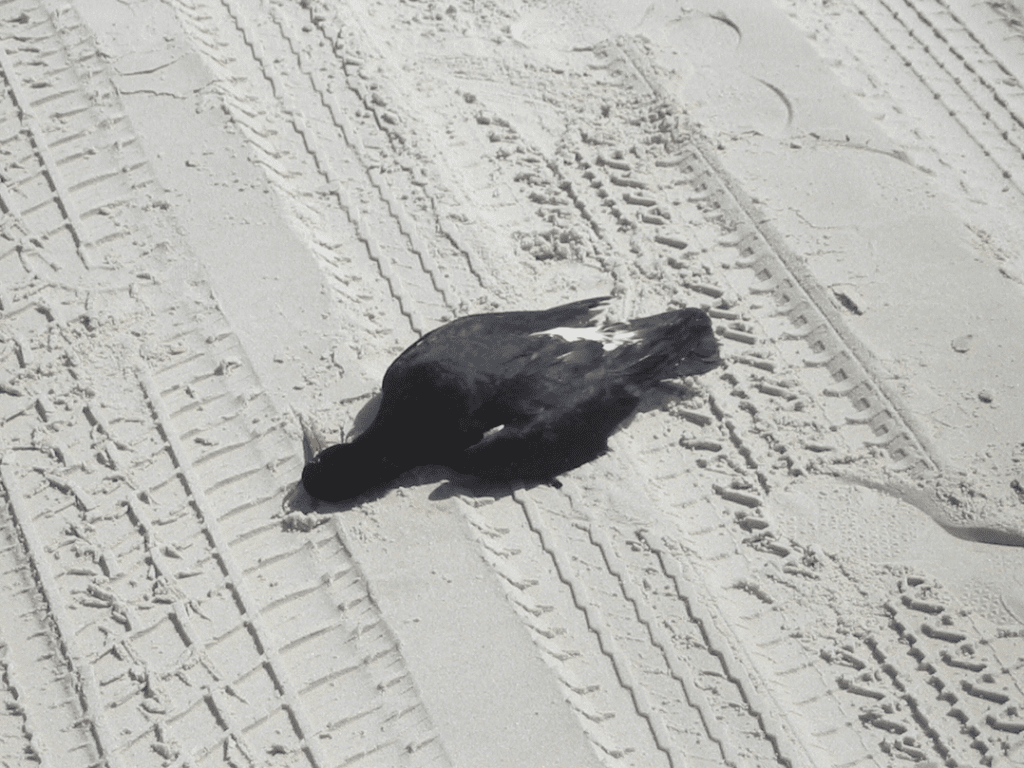Protected Magazine
The Impacts of Off-Road Vehicles (ORVS) on Beaches
Friends of Stradbroke Island (FOSI) has been concerned at the impacts of the increasing numbers of recreational vehicles on the beaches of Minjerribah (North Stradbroke Island). To understand and quantify these impacts, FOSI has prepared a report that analyses the scientific research evidence about them.
Erosion and Vegetation
On K’gari/Fraser Island, a study has shown that twenty percent of dune front and vegetation has been destroyed by ORVs, while in South Australia, they prevented or slowed the natural expansion of foredunes. In the USA, a New Jersey study showed that there was seven times more vegetation cover on protected beaches than on beaches used by ORVs, while at Cape Cod, beach vegetation was eliminated after 70-175 vehicle passes.
Invertebrates – worms, clams, molluscs and crustaceans, etc
A study on Noosa North Shore showed that 25-84% of sampling sites were void of invertebrates on trafficked beaches compared with 2-12% on protected beaches. On Minjerribah, ghost crabs were less than half as abundant on trafficked beaches than on protected beaches and a single vehicle traversing the beach at night killed between 0.12% and 0.75% of the ghost crab population.
Shore and Migratory Birds
The research shows that ORVs on beaches degrade food sources, disturb roosting and resting birds, and strike birds directly. In New South Wales, they were the main cause of destruction of Fairy Tern and Little Tern nests and in Tasmania, the main cause of the decline of Fairy Terns. A South Australian study showed that 81% of Hooded Plover nests were run over by 4WDs and up to 30% of the chicks were fatally crushed. In South Africa, the numbers of shore and migratory birds on beaches decreased in the 1980s and 1990s as ORV numbers increased, but bird numbers rebounded after restrictions on ORV access to beaches were introduced in 2001.
Turtles
All five local species of marine turtles are endangered or vulnerable. The research shows that ORVs compact sand, disturb nesting female turtles, crush their eggs, run over hatchlings and impede their movement down the beach. Tyre ruts can commonly be up to 10-15cm deep but only 53% of green turtle hatchlings can traverse a 10cm tyre rut. Even those that can traverse a 10cm rut take 18 times as long to move down a trafficked beach as on flat sand.
Other Impacts
In the period 2010 to 2019, one person died and five needed hospitalisation as a result of vehicle accidents on Minjerribah’s beaches. Aboriginal middens have been damaged by ORVs in NSW and litter on trafficked beaches is greater than on non-trafficked beaches. Behind the beach dunes on K’gari, ORV access by campers has led to wildfires and to faecal contamination of coastal streams.
Regulations
Current regulation of ORVs on beaches is fragmented between different levels and departments of governments and rarely enforced. It is a similar story in other states and countries, with the notable exceptions of the state of Victoria and the country of South Africa, where ORV access to beaches is almost totally banned.
How Can We Reduce these Impacts?
FOSI is planning a staged campaign to raise awareness of ORV impacts, engage with environment groups and other stakeholders, involve young people and citizen scientists and advocate for actions by governments to reduce the impacts of ORVs on beaches.
For more information: contact FOSI at info@fosi.org.au


